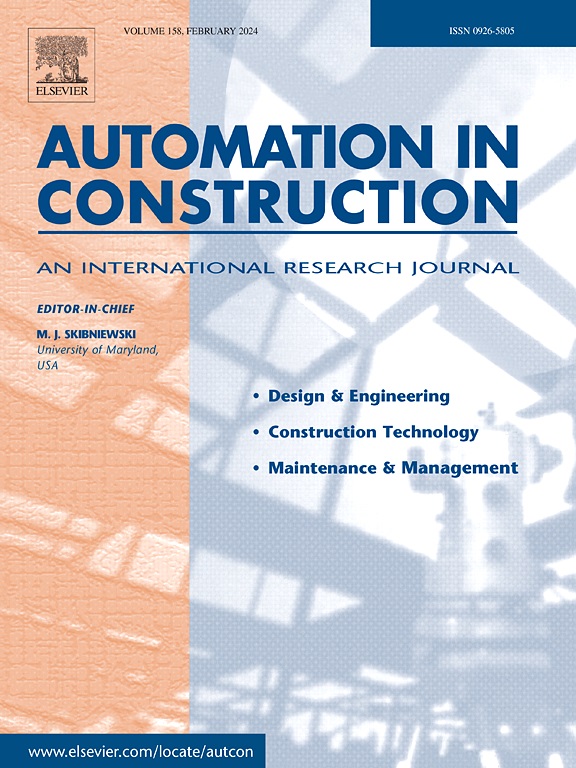利用主动学习集成变压器和无人机器人平台对混凝土结构裂缝进行定量评估
IF 9.6
1区 工程技术
Q1 CONSTRUCTION & BUILDING TECHNOLOGY
引用次数: 0
摘要
混凝土桥梁裂缝的定量评估对于结构健康监测和数字孪生至关重要。然而,裂缝分割模型的训练严重依赖标注资源,其分割能力往往无法满足实际应用中遇到的细裂缝边界定位的准确性。本文提出了一种主动学习集成裂缝分割转换器(ACS-Former)框架,以在有限的标注资源下最大限度地提高分割性能。双分支 ACS-Former 包括:(1) 用于多尺度裂缝分割的特征金字塔转换器 (FPT);(2) 边界难度感知主动学习 (BDAL),用于选择信息图像进行标注并纳入 FPT 训练。此外,还提出了一种粘附式攀爬机器人,用于收集大型桥梁难以接近部件的图像。在使用中的桥梁上进行的现场实验证明了所建议的 ACS-Former 和攀爬机器人的现场操作可行性和实用性,包括按照工程规范的要求对小于 0.2 毫米的裂缝进行量化。本文章由计算机程序翻译,如有差异,请以英文原文为准。
Quantitative assessment of cracks in concrete structures using active-learning-integrated transformer and unmanned robotic platform
Quantitative assessment of cracks in concrete bridges is crucial for structural health monitoring and digital twin. However, the training of crack segmentation models relies heavily on annotation resources, and their segmentation capabilities are often unsatisfactory in terms of the accuracy of boundary location of thin cracks encountered in practice. In this paper, an active-learning-integrated crack segmentation transformer (ACS-Former) framework is proposed to maximize segmentation performance with limited annotation resources. The two-branch ACS-Former includes (1) a feature pyramid transformer (FPT) for multi-scale crack segmentation and (2) boundary difficulty-aware active learning (BDAL) to select informative images for labeling and incorporation into FPT training. Additionally, an adhesive climbing robot is proposed for image collection of hard-to-access components of large bridges. The on-site operational feasibility and practicability of the proposed ACS-Former and climbing robot are demonstrated by field experiments performed on in-service bridges, including the quantification of cracks narrower than 0.2 mm, as required by engineering codes.
求助全文
通过发布文献求助,成功后即可免费获取论文全文。
去求助
来源期刊

Automation in Construction
工程技术-工程:土木
CiteScore
19.20
自引率
16.50%
发文量
563
审稿时长
8.5 months
期刊介绍:
Automation in Construction is an international journal that focuses on publishing original research papers related to the use of Information Technologies in various aspects of the construction industry. The journal covers topics such as design, engineering, construction technologies, and the maintenance and management of constructed facilities.
The scope of Automation in Construction is extensive and covers all stages of the construction life cycle. This includes initial planning and design, construction of the facility, operation and maintenance, as well as the eventual dismantling and recycling of buildings and engineering structures.
 求助内容:
求助内容: 应助结果提醒方式:
应助结果提醒方式:


